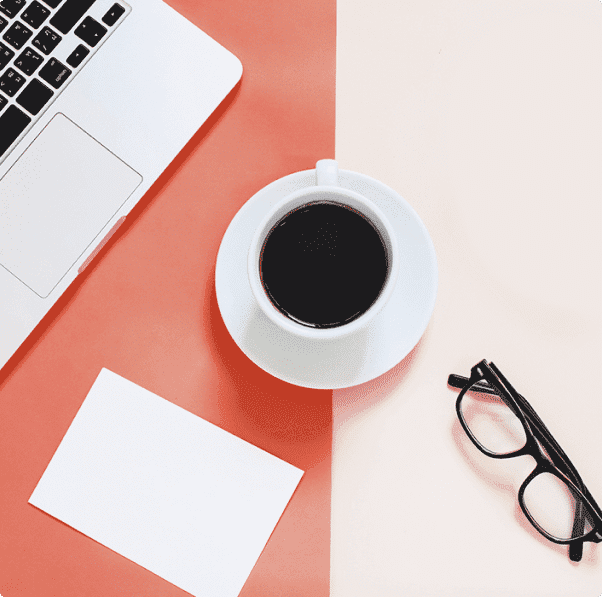Between the Apple and Android app stores, mobile users are spoiled for choice, with more than 4 million mobile apps available for download today. (1)
With so much competition in the market, ensuring that your app is well-designed and intuitive can help it stand out and prevent it from becoming one of the hundreds of thousands of apps that are never downloaded. (2)
Whether or not you work with a developer, the app design process will likely include the following steps:
Step 1. Plan your app idea

First and foremost, you need to understand what it is that you want your app to do.
Think about the functionality you’d like to include in your app, then sketch out exactly what you’d like it to look like and what actions you think it should contain. It can help sketch each of the screens within the app that you’d like to see created to help demonstrate the flow of the user actions. (3)
When designing an app, consider your minimum viable product (MVP) or what functions must be included to create your app's most basic version. Some features might be fun to add but maybe best saved for future versions.
Step 2. Do your market research
Once you have a clear vision of how you want your app to work, investigate some similar apps on the market, and ensure that your app provides some value that they are not.
Review how competitors have priced their apps, and consider what features you could include that others might be missing. If app stores are oversaturated with similar offerings, think about pivoting your app to fill a different market gap.
Step 3. Choose a development option

Mobile app design can be complicated and requires a high level of technical skill. Unless your app idea is simple enough to be created with a purpose-built basic app builder or happen to be a skilled coder, consider working with an app development company to bring your vision to life. (3)
Engaging a company's services that develop apps professionally means that you can relax and let them take care of the behind-the-scenes technical design. At the same time, you focus on functionality and user experience. You’ll also want to consider how much the design process will cost, as this will factor into how it’s developed.
Step 4. Review user stories and work through technical requirements
Before the technical design begins, a developer will work with you to gather all the information about your vision and discuss user stories with you. User stories are informal, short glimpses into what various types of users may want out of a mobile app, for example:
- ‘As a typical user, I want intuitive navigation so that I can find my way around.’
- ‘As a security-conscious user, I want to understand how my data is used and control my privacy settings’ (6)
By considering different user experiences, your developer can help refine your app design to suit a wide range of users and prioritize features based on your budget.
Once everyone agrees about what functionality in your app design, it’s time to map out the technical requirements. Your developer will plan each screen of your app using ‘wireframes,’ which are essentially visual representations of what it will look like, a low-fidelity prototype will be created for demonstrations. (7)
Once your prototype is operational, it’s important to test it and get feedback from yourself, your developer, and potential users (if available) to know whether the design is working as planned. Your developer may suggest improvements or cost-cutting measures and raise technical challenges that might require a design adjustment. (5)
Based on this feedback, your developer will work with you towards a final concept and design, and you can approve the updated plan when all the necessary changes have been made.
Step 5. Perform bug testing
As the final product takes shape, quality assurance teams will perform various tests to identify any bugs or technical issues within the app design. (7)
Most apps are intended for use across multiple devices; bug testing is critical in ensuring that your app design looks and works as planned on mobiles and tablets, as well as on different operating systems. (5)
Once your app has been built and bug tested, it’s ready for delivery.
Congratulations, the app you designed is now a reality!
Consider having some form of launch party as your app is made available on different platforms and creating a marketing strategy to ensure that potential users know how your app could change their lives for the better.
Regularly checking your user feedback will help you periodically update your app with the improved functionality your users want, ensuring that you consistently receive the five-star ratings you need to become the next top app designer.
References
- “App Download And Usage Statistics”, Source: https://www.businessofapps.com/data/app-statistics/
- “400,000 Apps Have Never Been Downloaded”, Source: https://www.phonearena.com/news/400000-apps-in-the-App-Store-have-never-been-downloaded-says-report_id32943
- “How To Make An App In 9 Steps”, Source: https://learnappmaking.com/how-to-make-an-app/
- “How To Create An App In 9 Steps”, Source: https://www.spaceotechnologies.com/how-to-create-an-app/
- “How To Create A Mobile App”, Source: https://buildfire.com/how-to-create-a-mobile-app/
- “Explaining And Developing Your App With User Stories”, Source: https://designli.co/blog/explaining-app-user-stories/
- “Our Software Development Process”, Source: https://greyloud.com/process/

